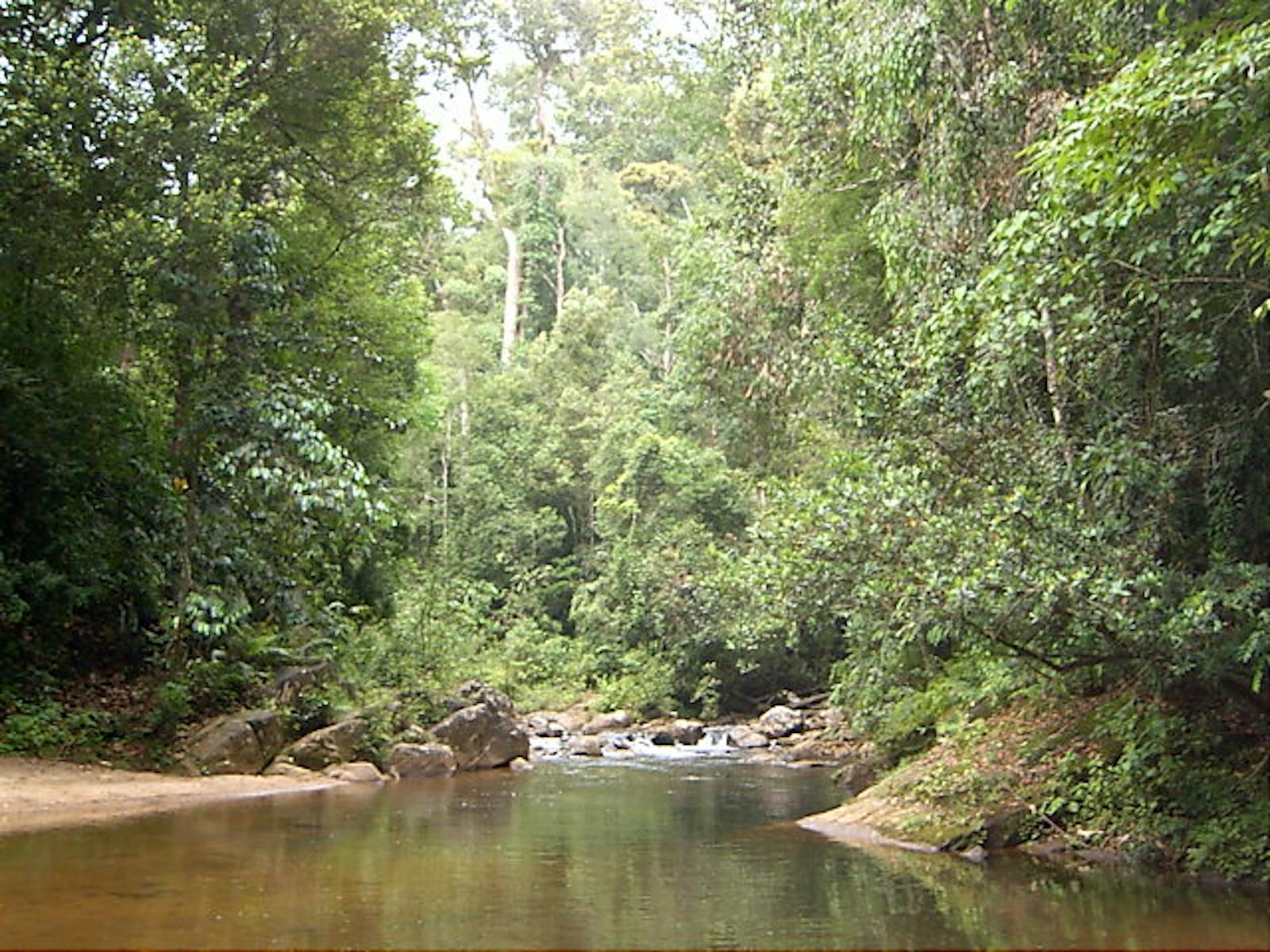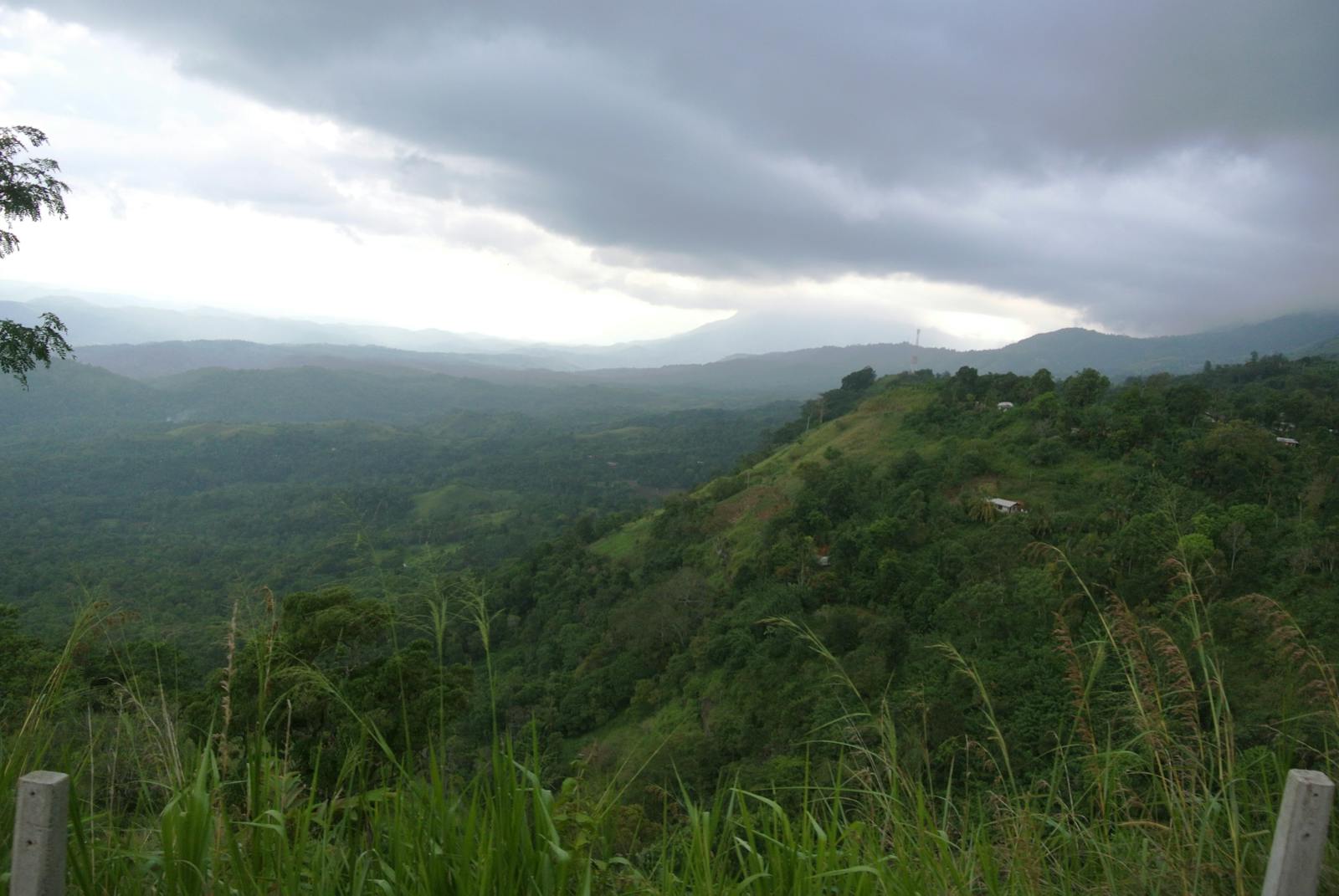Sri Lanka Lowland Rainforests
The ecoregion’s land area is provided in units of 1,000 hectares. The protection goal is the Global Safety Net (GSN1) area for the given ecoregion. The protection level indicates the percentage of the GSN goal that is currently protected on a scale of 0-10.
Bioregion: Northern Deccan & Odisha Tropical Forests (IM7)
Realm: Indomalaya
Subrealm: Indian Subcontinent
Ecoregion Size (1000 ha):
1,258
Ecoregion ID:
274
Conservation Target:
82%
Protection Level:
1
States: Sri Lanka
Over 70% of the animals and plants that are endemic to the island of Sri Lanka—and thus found nowhere else on Earth—are supported in the Sri Lanka Lowland Rain Forests ecoregion. Recent and ongoing explorations keep adding dozens of species more to the lists of endemics. For example, dedicated amphibian surveys increased the number of frog species described from 35 to over 250 in short period time, and the same is true for most other smaller taxonomic groups.
The ecoregion represents the tropical rainforests of the southwest quarter of the island. These rainforests have been separated from the nearest rainforests in the Western Ghats mountain range along the west coast of India since the late Miocene, over 7 million years ago, allowing species to evolve in isolation[iii]. The vegetation is primarily influenced by a southwest monsoon, which brings over 5,000 mm of rainfall between May and September. Temperatures are nearly constant year-round, varying only slightly, from 27 to 30°C. Relative humidity is high, ranging from 80 to 85%, creating conditions typical in rainforests.
The large trees in these rainforests, with a canopy of over 40 m, are characterized by two communities. One is dominated by species of the genus Dipterocarpus, so named on account of the two ‘wings’ attached to the seeds that allow them to spiral and disperse far from the mother tree. The other community is dominated by species of two genera, Mesua and Shorea.
Trees in the family Dipterocarpaceae dominate most Asian rainforests, but virtually all of the species in Sri Lanka are endemic to its rainforests. In addition to the richness of endemic species among the large trees, the smaller plants also have high proportions of endemicity, and these are usually indicators of forest disturbance levels. For instance, an endemic ground orchid known as ‘wanaraja’ or king of the forest (Anoectochilus setaceus) is found only in undisturbed portions of these rain forests.
Rainforests lack a diverse megavertebrate community. The largest predator is the Sri Lankan leopard, an endemic subspecies. Others include the fishing cat, jungle cat, and rusty spotted cat, which is also the smallest wild cat in the world. The purple-faced leaf monkey is an endemic primate in this ecoregion. The ecoregion is completely contained within an Endemic Bird Area because of the high number of endemic birds, such as the Sri Lanka blue magpie, and Sri Lanka whistling-thrush.
Most of the natural forests in this ecoregion have been cleared for tea, rubber, and coconut plantations, as well as for rice paddies and human settlements. Over half of Sri Lanka’s human population lives in this small ecoregion, which represents less than 25 percent of the land area. Forest clearing is prohibited by law, but clearing for settlements, timber, and agriculture continues to encroach into the remaining fragments. Of the five protected areas in the ecoregion, Sinharaja Natural Heritage Wilderness Area and Peak Wilderness Sanctuary are the two largest. Since Sri Lanka’s important and irreplaceable biodiversity is in this ecoregion, the current level of protection is inadequate.
The most important conservation action are to:
- Amalgamate remaining adjacent forest patches into protected area complexes and create larger landscapes to maintain ecological connectivity.
- Engage the community in the landscape matrix surrounding the forests as conservation stewards to facilitate sustainable matrix management.
- stablish a Green Fund to purchase strategic lands for conservation set-asides and Public-Private Partnerships to manage Forest Reserves.
-
-
1. National Biodiversity Strategic Action Plan 2016-2022, Sri Lanka. Biodiversity Secretariat, Ministry of Mahaweli Development and Environment. May 2016.
2. Wikramanayake, E, E. Dinerstein, et al. 2002. Terrestrial Ecoregions of the Indo-Pacific: A Conservation Assessment. Island Press.
3. Integrated Spatial Planning and Analysis to Prioritize Biodiversity Conservation in Sri Lanka. Environmental Foundation, Ltd and National Biodiversity Secretariat, Sri Lanka. 2017 -
Cite this page: Sri Lanka Lowland Rainforests. Ecoregion Snapshots: Descriptive Abstracts of the Terrestrial Ecoregions of the World, 2021. Developed by One Earth and RESOLVE. https://www.oneearth.org/ecoregions/sri-lanka-lowland-rainforests/
-




